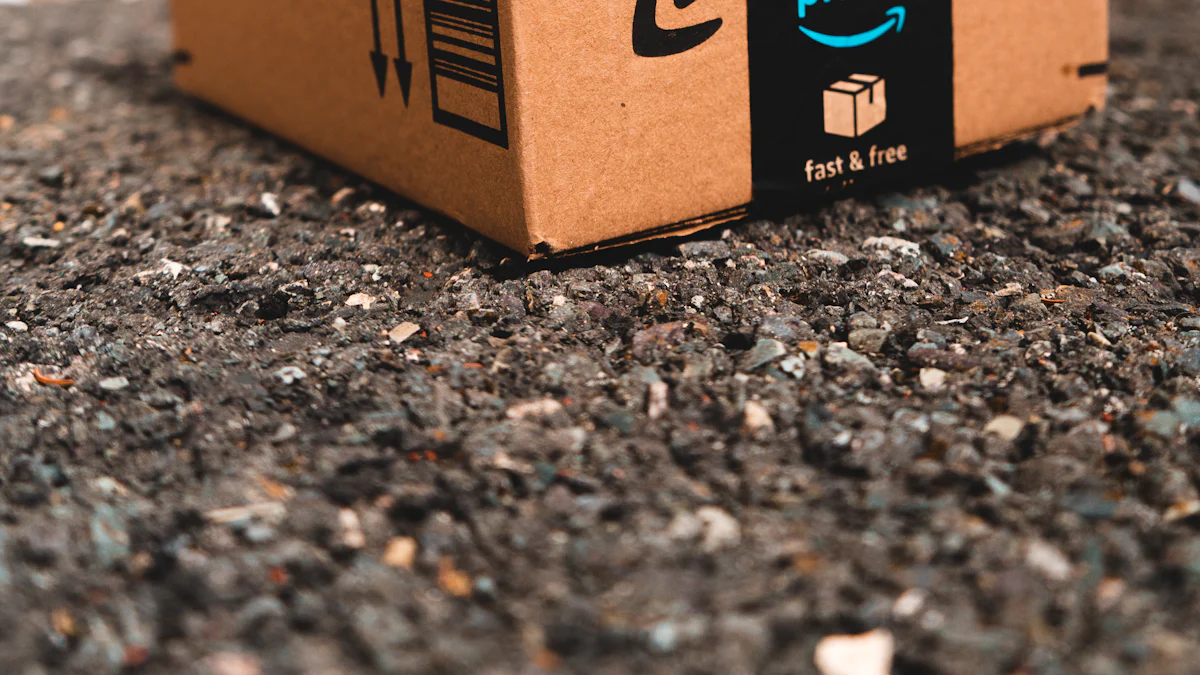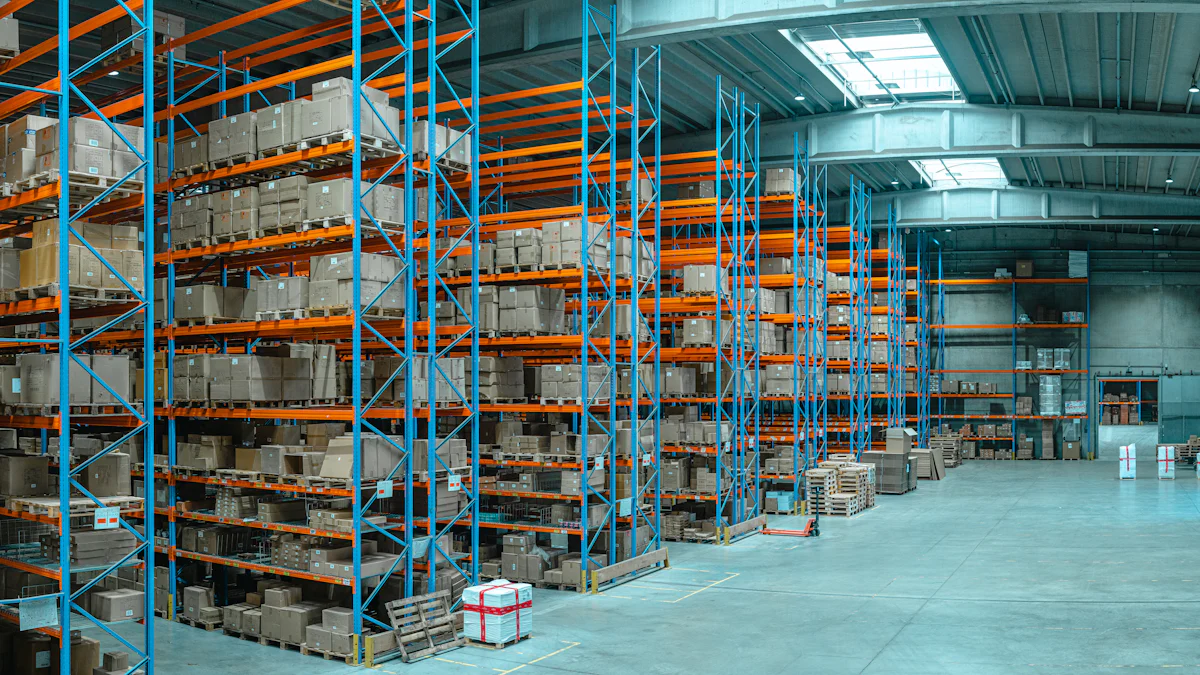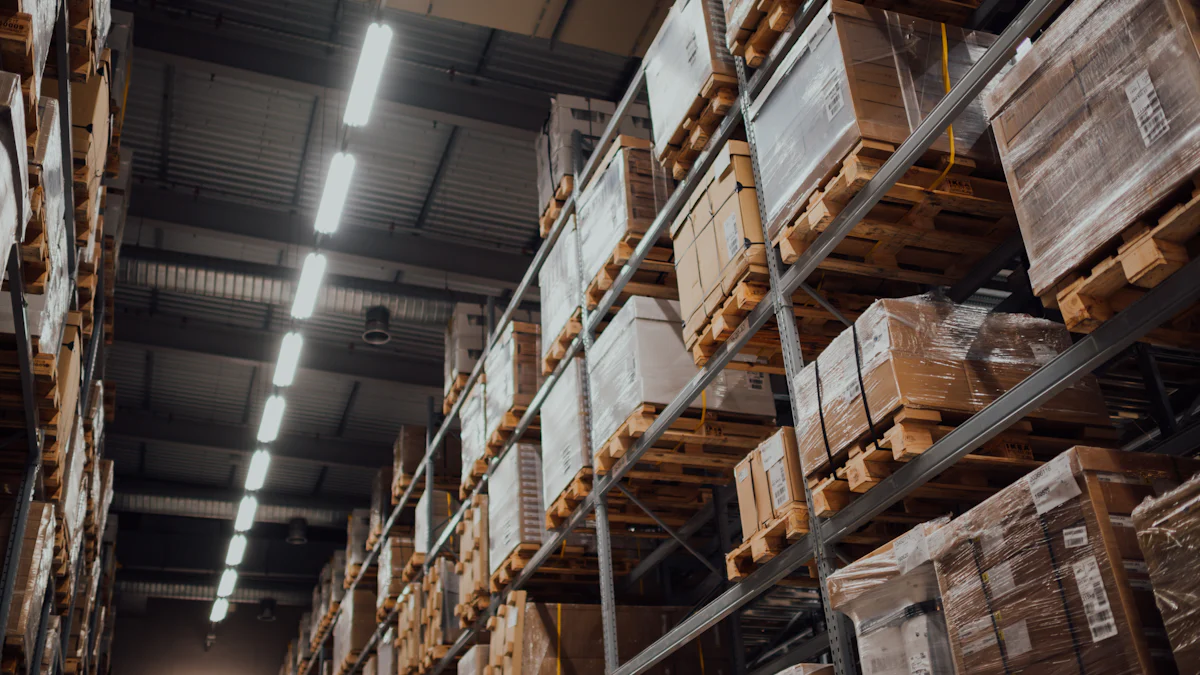
Shipping costs can eat into your profits faster than you think. If you want to stay competitive, you need to minimize Amazon FBA expenses wherever possible. Even small tweaks, like adjusting packaging or rethinking inventory strategies, can lead to noticeable savings. The key is to take control of these costs before they spiral out of hand. By being proactive, you’ll not only protect your margins but also set your business up for long-term success. Why let unnecessary expenses hold you back when smarter choices can make a big difference?
Key Takeaways
- Optimize your packaging by using lightweight and durable materials to reduce shipping costs without compromising product safety.
- Measure your products accurately and choose custom-sized packaging to avoid dimensional weight charges and minimize expenses.
- Bundle complementary products together to save on shipping fees and enhance customer experience, increasing your average order value.
- Maintain optimal stock levels to avoid overstocking and high storage fees; analyze sales trends to keep inventory balanced.
- Utilize Amazon’s inventory management tools, like the Inventory Performance Dashboard, to make informed restocking decisions.
- Take advantage of Amazon’s Partnered Carrier Program for discounted shipping rates, simplifying logistics and reducing costs.
- Regularly audit your shipping and inventory processes to identify inefficiencies and make necessary adjustments for ongoing savings.
Packaging Optimization to Minimize Amazon FBA Shipping Costs

Shipping costs can quickly add up, but optimizing your packaging is one of the easiest ways to minimize Amazon FBA expenses. By making smarter choices with materials, dimensions, and bundling, you can reduce costs while keeping your products safe and appealing to customers.
Use Lightweight and Durable Materials
The weight of your packaging directly impacts your shipping costs. Heavier materials increase expenses, so switching to lightweight yet durable options can make a big difference. Look for materials like corrugated cardboard or poly mailers that offer strength without unnecessary bulk. These materials protect your products during transit while keeping the overall package weight low.
You should also avoid overpacking. Excessive padding or oversized boxes not only increase weight but also waste space. Stick to what’s necessary to keep your items secure. Lightweight packaging helps you minimize Amazon FBA costs without compromising product safety.
Optimize Package Dimensions to Avoid Dimensional Weight Charges
Amazon calculates shipping fees based on dimensional weight when your package size exceeds certain limits. This means that even if your product is light, oversized packaging can lead to higher costs. To avoid this, measure your products carefully and choose boxes or mailers that fit snugly.
Custom-sized packaging can be a game-changer here. It reduces empty space and ensures you’re not paying for unused volume. Tight, efficient packaging also prevents damage during shipping, which saves you from dealing with returns or replacements. Optimizing dimensions is a simple yet effective way to minimize Amazon FBA shipping costs.
Bundle Products Strategically for Cost Efficiency
Bundling products can help you save on shipping and fulfillment fees. When you group complementary items into a single package, you reduce the number of shipments and lower your overall costs. For example, if you sell skincare products, bundling a cleanser and moisturizer together can cut down on packaging and shipping expenses.
Strategic bundling also improves customer experience. Buyers appreciate the convenience of receiving multiple items in one package. Plus, it can increase your average order value, boosting your profitability. By bundling wisely, you not only minimize Amazon FBA costs but also enhance your business’s efficiency.
“Efficient packing is crucial; ensure that each box is packed tightly to avoid using oversized boxes filled with unnecessary packing materials.” – Google Search Results
Efficient Inventory Management to Minimize Amazon FBA Costs
Managing your inventory efficiently can save you money and help you avoid unnecessary fees. By staying on top of stock levels, using Amazon’s tools, and removing items that don’t sell, you can minimize Amazon FBA costs and keep your business running smoothly.
Maintain Optimal Stock Levels to Avoid Overstocking
Overstocking can lead to high storage fees, especially during peak seasons when Amazon increases its rates. Keeping just the right amount of inventory ensures you’re not paying for space you don’t need. Start by analyzing your sales trends. Look at how quickly your products sell and adjust your stock levels accordingly.
Avoid the temptation to overstock “just in case.” Instead, focus on maintaining a balance. Too much inventory ties up your cash and increases your costs. Too little inventory risks stockouts, which can hurt your sales and rankings. Striking this balance helps you minimize Amazon FBA expenses while keeping your customers happy.
Leverage Amazon’s Inventory Tools for Better Stock Management
Amazon provides several tools to help you manage your inventory effectively. The Inventory Performance Dashboard is a great place to start. It gives you insights into your stock levels, sales velocity, and excess inventory. Use this data to make informed decisions about restocking and removing items.
Another useful tool is the Restock Inventory Report. This report recommends when and how much to restock based on your sales history. By following these recommendations, you can avoid overstocking or running out of stock. These tools simplify inventory management and help you stay in control of your costs.
Remove Unprofitable or Slow-Moving Items
Holding onto items that don’t sell can drain your resources. Slow-moving or unprofitable products take up valuable storage space and increase your fees. Regularly review your inventory to identify these items. If a product hasn’t sold in months, it’s time to take action.
Consider running promotions or discounts to clear out these items. You can also use Amazon’s FBA Liquidations program to recover some of your costs. Removing these products frees up space for better-performing items and reduces your overall expenses. This simple step can make a big difference in minimizing Amazon FBA costs.
“Understanding the cost structure of FBA fees and exploring alternative fulfillment approaches can help sellers avoid unnecessary expenses.” – Google Search Results
Leveraging Amazon Programs to Minimize FBA Shipping Costs

Amazon offers several programs designed to help sellers like you reduce shipping expenses. By taking advantage of these options, you can streamline your operations and save money. Let’s explore how these programs can work for your business.
Use the Partnered Carrier Program for Discounted Rates
Shipping costs can quickly add up, but Amazon’s Partnered Carrier Program provides a solution. This program allows you to access discounted shipping rates through Amazon’s trusted carriers. These rates are often lower than what you’d get by negotiating directly with shipping companies.
To use this program, create a shipment plan in your Seller Central account. Once you’ve done that, select the Partnered Carrier option during the shipping process. You’ll see the cost savings immediately. This program simplifies your logistics while helping you minimize Amazon FBA expenses. It’s a win-win for your business.
Monitor and Optimize the Inventory Performance Index (IPI)
Your Inventory Performance Index (IPI) score plays a big role in your storage costs. A higher IPI score means better inventory management, which can lead to lower fees. Amazon evaluates your score based on factors like excess inventory, sell-through rates, and stranded inventory.
To improve your IPI score, focus on clearing out slow-moving items and maintaining optimal stock levels. Use Amazon’s inventory tools to track your performance and identify areas for improvement. A strong IPI score not only reduces costs but also ensures you’re making the most of your storage space.
Enroll in the Small and Light Program for Eligible Products
If you sell small, lightweight items, Amazon’s Small and Light Program can help you save on fulfillment fees. This program is specifically designed for products that weigh less than three pounds and cost under $12. By enrolling, you’ll benefit from reduced storage and shipping costs.
To get started, check if your products meet the eligibility criteria. Once approved, Amazon will handle the rest. This program is perfect for sellers who want to minimize Amazon FBA costs while offering affordable products to their customers. It’s an easy way to boost your profitability.
“Utilizing Amazon's Partnered Carrier Program can offer discounted shipping rates, which can help minimize overall shipping costs.” – Google Search Results
Fee Reduction Strategies to Minimize Amazon FBA Costs
Reducing fees is one of the smartest ways to protect your profits. Amazon FBA fees can add up quickly, but with a few strategic adjustments, you can keep these costs under control. Let’s dive into some actionable tips to help you save money.
Minimize Fulfillment Fees by Optimizing Packaging
Fulfillment fees are based on the size and weight of your products. By optimizing your packaging, you can lower these fees significantly. Start by choosing compact packaging that fits your product snugly. Avoid oversized boxes or unnecessary padding that increases dimensions. Smaller packages not only reduce fulfillment fees but also improve shipping efficiency.
Switch to lightweight materials like poly mailers or thinner cardboard. These options keep your package sturdy without adding extra weight. If your product allows, consider flat-packing items to save even more space. Every inch and ounce you save helps you minimize Amazon FBA costs.
Reduce Storage Fees with Lean Inventory Practices
Storage fees can eat into your profits, especially during peak seasons when Amazon raises its rates. Keeping a lean inventory is key to avoiding these charges. Focus on stocking only what you need based on your sales trends. Use tools like Amazon’s Restock Inventory Report to plan your shipments wisely.
Regularly review your inventory for slow-moving or unsold items. These products take up valuable space and increase your costs. Run promotions or discounts to clear them out quickly. By maintaining a lean inventory, you’ll reduce storage fees and free up cash flow for other business needs.
Explore Lower Referral Fee Categories for Your Products
Amazon charges referral fees based on your product category. Some categories have lower fees than others. Take time to review your product listings and see if they qualify for a different category with reduced fees. For example, if your product fits into both “home Goods” and “Office Supplies,” compare the referral fees for each category.
When listing new products, research the fee structure before finalizing the category. Small changes in categorization can lead to significant savings over time. This strategy requires a little effort upfront but can make a big difference in minimizing Amazon FBA expenses.
“Understanding the cost structure of FBA fees and exploring alternative fulfillment approaches can help sellers avoid unnecessary expenses.” – Google Search Results
Regular Monitoring and Adjustments to Minimize Amazon FBA Costs
Staying on top of your shipping and fulfillment costs requires regular monitoring and fine-tuning. By keeping a close eye on your expenses and making adjustments when needed, you can ensure your business remains profitable. Let’s explore how you can take control of your costs with these actionable strategies.
Track and Analyze Shipping Costs Over Time
Shipping costs can fluctuate, so tracking them consistently is essential. Start by reviewing your shipping expenses every month. Look for patterns or unexpected spikes that could indicate inefficiencies. Use tools like spreadsheets or software to organize this data and make it easier to analyze.
Compare your current costs to previous months. Are they increasing? If so, investigate why. Maybe your packaging has changed, or you’re using a more expensive carrier. Identifying these trends helps you pinpoint areas where you can cut back. Tracking your shipping costs over time gives you the insights needed to minimize Amazon FBA expenses effectively.
Evaluate Sales Velocity to Align Inventory with Demand
Your sales velocity—the rate at which your products sell—directly impacts your inventory needs. If you’re not aligning your stock levels with demand, you could be wasting money on storage fees or losing sales due to stockouts. Regularly evaluate your sales data to understand how quickly your products move.
For fast-selling items, ensure you have enough stock to meet demand without overstocking. For slower-moving products, consider reducing your inventory to avoid unnecessary storage costs. Adjusting your inventory based on sales velocity keeps your operations efficient and helps you minimize Amazon FBA costs.
Conduct Periodic Audits to Identify Inefficiencies
Auditing your processes might sound tedious, but it’s one of the best ways to uncover hidden inefficiencies. Set aside time every quarter to review your shipping, packaging, and inventory practices. Look for areas where you might be overspending or missing opportunities to save.
For example, are you using oversized boxes when smaller ones would suffice? Are you paying for storage on items that haven’t sold in months? These small inefficiencies add up over time. By conducting regular audits, you can address these issues and keep your costs under control.
“Conducting periodic audits can help sellers identify inefficiencies and reduce unnecessary expenses.” – Google Search Results
Minimizing Amazon FBA shipping costs is all about making smart, proactive choices. By focusing on packaging optimization, efficient inventory management, and leveraging Amazon’s programs, you can significantly cut expenses and boost your profitability. Each strategy, from using lightweight materials to tracking your sales velocity, plays a vital role in keeping your costs under control. Start implementing these tips today and monitor your progress regularly. Small adjustments can lead to big savings, helping you protect your margins and grow your business with confidence.
FAQ
What is the most effective way to reduce Amazon FBA shipping costs?
The best way to cut shipping costs is by optimizing your packaging. Use lightweight, durable materials and ensure your package dimensions are as small as possible to avoid dimensional weight charges. Bundling products strategically can also help you save on shipping and fulfillment fees.
How can I avoid high storage fees with Amazon FBA?
To avoid high storage fees, maintain lean inventory levels. Analyze your sales trends to stock only what you need. Use Amazon’s inventory tools, like the Restock Inventory Report, to plan shipments wisely. Clearing out slow-moving or unsold items regularly also helps reduce storage costs.
Are Amazon’s Partnered Carrier Program rates worth it?
Yes, the Partnered Carrier Program offers discounted shipping rates that are often lower than what you’d get directly from carriers. It simplifies your logistics and reduces your overall shipping expenses. You can access this program through your Seller Central account when creating a shipment plan.
What is the Small and Light Program, and how does it save money?
The Small and Light Program is designed for products under three pounds and priced below $12. By enrolling, you benefit from reduced storage and fulfillment fees. It’s an excellent option if you sell small, lightweight items and want to maximize profitability.
How do I improve my Inventory Performance Index (IPI) score?
To boost your IPI score, focus on better inventory management. Remove excess or stranded inventory, maintain optimal stock levels, and improve your sell-through rate. Use Amazon’s Inventory Performance Dashboard to track your progress and identify areas for improvement.
Can I negotiate lower referral fees for my products?
You can’t negotiate referral fees directly, but you can explore listing your products in categories with lower fees. Review Amazon’s fee structure and see if your product qualifies for a different category. Small changes in categorization can lead to significant savings over time.
How often should I audit my shipping and inventory processes?
Conduct audits at least once every quarter. Regular reviews help you identify inefficiencies in packaging, shipping, and inventory management. Addressing these issues promptly ensures you keep your costs under control and maintain profitability.
What tools does Amazon provide to help manage inventory?
Amazon offers several tools, including the Inventory Performance Dashboard and the Restock Inventory Report. These tools provide insights into stock levels, sales velocity, and excess inventory. They help you make informed decisions about restocking and removing items.
Is bundling products always a good idea?
Bundling works well when the items complement each other and provide value to the customer. It reduces shipping costs and improves customer satisfaction. However, ensure the bundled products align with customer needs to avoid unsold inventory.
How can I track my shipping costs effectively?
Track your shipping costs monthly using spreadsheets or software. Look for patterns or unexpected spikes. Compare current expenses to previous months to identify inefficiencies. Consistent tracking gives you the data needed to make cost-saving adjustments.
Table of Contents
- Key Takeaways
- Packaging Optimization to Minimize Amazon FBA Shipping Costs
- Efficient Inventory Management to Minimize Amazon FBA Costs
- Leveraging Amazon Programs to Minimize FBA Shipping Costs
- Fee Reduction Strategies to Minimize Amazon FBA Costs
- Regular Monitoring and Adjustments to Minimize Amazon FBA Costs
-
FAQ
- What is the most effective way to reduce Amazon FBA shipping costs?
- How can I avoid high storage fees with Amazon FBA?
- Are Amazon’s Partnered Carrier Program rates worth it?
- What is the Small and Light Program, and how does it save money?
- How do I improve my Inventory Performance Index (IPI) score?
- Can I negotiate lower referral fees for my products?
- How often should I audit my shipping and inventory processes?
- What tools does Amazon provide to help manage inventory?
- Is bundling products always a good idea?
- How can I track my shipping costs effectively?

